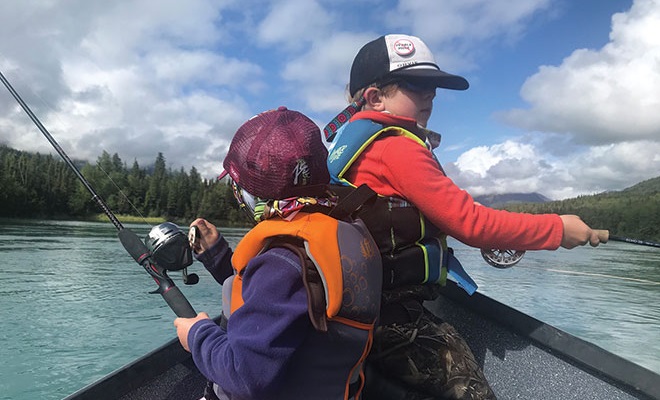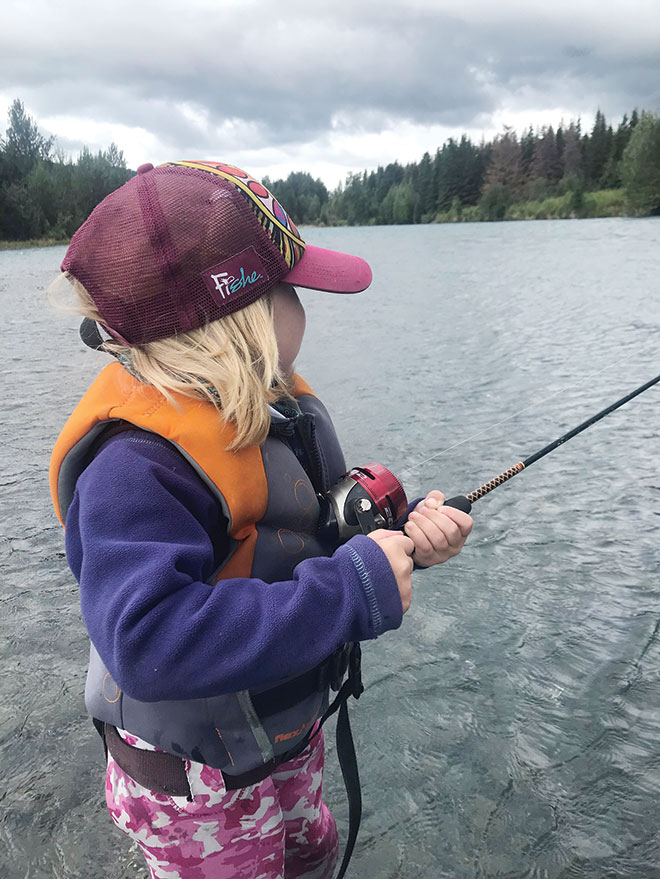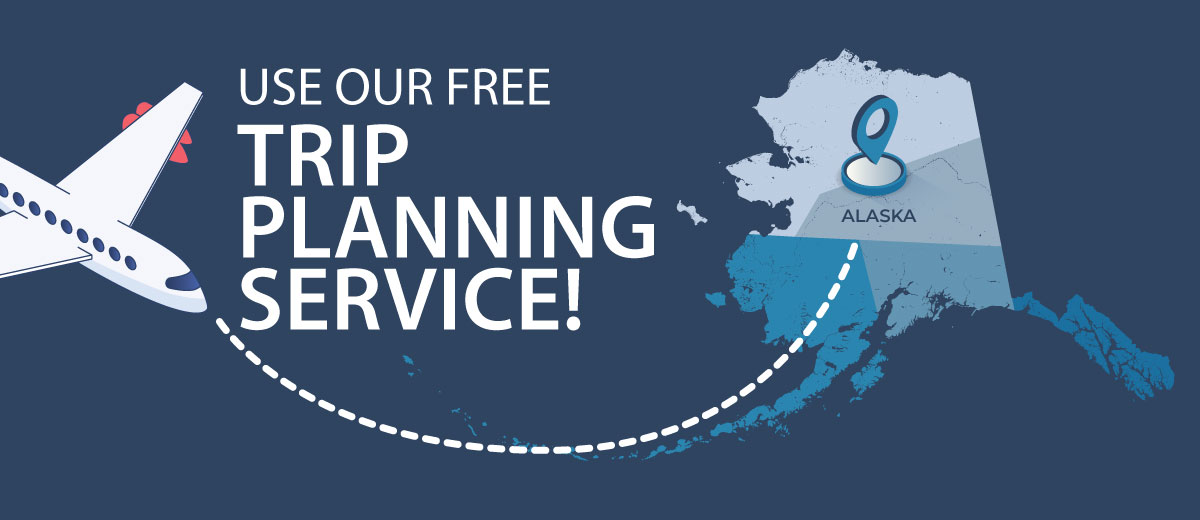The Conscious Angler
by Dave Atcheson

Caring for our rivers and fisheries now ensures that future generations have the same great fishing opportunities we do today. © Nelli Williams
Fishing, for many of us, is all about relaxation. It’s about getting into the zone and away from the stresses of everyday life, and so often the river provides. But like all relationships, it is a two-way street. The longer we fish the more likely we are to recognize that what we give the river, stream, or lake, the more, in terms of joy and satisfaction, we will receive in return.
So, what exactly does it mean to be a conscious or mindful angler? And how does one give back to the fisheries and become a viable partner in this relationship? It can be as easy as recognizing our place within the environment, where we live and recreate. It can be as simple as bringing a garbage bag along on our next fishing trip and dedicating an hour to river clean up. Making a commitment to only harvest what we absolutely need, or to practice catch-and-release when warranted; perhaps choosing to not even fish at all on stocks that are truly depleted.
It’s something that may begin at home, long before we head afield. Most of us who are avid anglers already enjoy doing a little research on our quarry, usually as a way to improve our fishing. But along with making us better anglers, it also gives us invaluable insight into our environment and thus a means to preserve and protect it. Learning more about the habits and lifecycle of salmon, for instance, will allow us to identify spawning areas, and in that way be less likely to disturb them. This may even be more critical with resident species and fish that spawn multiple times throughout their lives. A good example of this is knowing that resident rainbow trout spawn in the spring and being able to identify a typical spawning area and spawning fish. The majority of the Kenai River, for instance, opens for fishing in early June, when many of these fish are still actively spawning. These large trout, still holding on their redds, can pose a great temptation, especially for new anglers. They have not, however, been feeding regularly and are often extremely weak from the great amount of energy they have expended. Learning to identify these areas and avoid them is a great way to incorporate conservation ethics into our activity.

Young anglers are the future stewards of the resource. © Nelli Williams
This practice can extend to when we travel as well. We all research our destinations, and the fish we are going to target, but what about issues surrounding conservation and the environment? As a tourist spending money in a local economy, we have a valuable platform and a voice that will often be heeded by those in power. Money talks. This can also be extended a step further, to those we will be fishing with. If booking at a lodge, it’s common to ask about qualifications of those who will be guiding us, but what about inquiring about the outfit’s stance on issues that concern the fish? What conservation groups or efforts are they affiliated with, and what do they do in their daily activities that furthers conservation and the perpetuation of fish populations they target?
Back at home, we can make an even deeper commitment. How about joining a group like Trout Unlimited or the Kenai Watershed Forum and getting involved in a restoration project or Stream Watch? The programs these groups support provide a great opportunity to learn more about the importance of riparian habitat, for instance, or about the threat of invasive species. Whether with one of these organizations or on our own, how about introducing a young person or non-angler to the sport, and in the process promoting the importance of a healthy ecosystem? This can even extend beyond the fish, to instilling a true sense of place, and the recognition of those who have come before us. The Kenai Peninsula, for instance, has been occupied by Athabascan Indians called the Dena’ina for generations. It is vital to remember that these are Kenaitze Dena’ina homelands, a place they call Yaghanen, or “the good land,” and that the very fish we are targeting today are the descendants of the same fish that have sustained the Dena’ina for thousands of years and continue to sustain them to this day.
These are just a few ways to actively integrate history and conservation into our fishing trips, and by doing so, become a more conscious and conscientious angler. By learning a little bit more about our land, and our environment, we will help protect this valuable resource; and by embracing conservation, and these fish, we will have the joy of catching them, and more importantly their offspring, for many seasons to come.
Dave Atcheson is with Trout Unlimited Alaska and based on the Kenai Peninsula. He is also the author of several books including, Fishing Alaska’s Kenai Peninsula. For more info visit daveatcheson.com.
This blog originally appeared as the Conservation column in the July 2021 issue of Fish Alaska.


